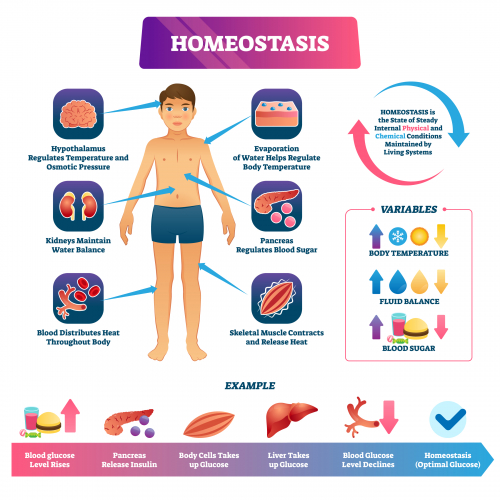Did you know that even when you’re fast asleep your body is still using energy?

Even when you're fast asleep, dreaming of not having to wake up early for school, the body uses so much energy! That's because it has to keep a constant internal environment.
This process of keeping things the same is called homeostasis.
A series of automatic control systems ensures that the body maintains a constant temperature, steady levels of water and balanced blood sugar levels.
Homeostasis allows the body’s cells to work at their optimum - meaning at their best conditions.
The conditions of the environment are always changing. Our body has to respond to these changes, but at the same time ensure that certain internal conditions don't vary too much, otherwise, damage could be caused.

One example is temperature. Environmental temperature is constantly changing - part of the day can be very hot, the next very cold. Even slight changes in body temperature can have a major effect on health. If body temperature falls too low, reactions become too slow for cells to survive; too high, and the body’s enzymes are at risk of denaturing. Our organs, such as the heart, liver and kidneys, are maintained at 37°C. This is the core body temperature and our body has to maintain these temperatures. This is done by negative feedback.
Negative feedback is how the body maintains normal levels. If the level of something rises, control systems will come into place to reduce levels again, and if the level of something falls, control systems will raise it again.
Negative feedback can be summarised in the flow diagram below:

In the following activity, you will define homeostasis.








